- Home
- Stephen Baxter
World Engine Page 2
World Engine Read online
Page 2
I kept on working on the Bootstrap projects. But by then, you see, Emma, or her loss, or her magnificent quest, had changed my view on the public space programme. Or reinforced it. I figured I could maybe change things from within, rather than from without. And anyhow it would honour Emma’s memory.
Or maybe that’s just rationalisation. Michael once told me that when I lost his mother, I lost my ability to dream. Bootstrap was nothing but a dream, at that point. And all I wanted after Emma was to fly stuff. Maybe he was right.
Anyhow, that’s what I did. I distanced myself from Bootstrap and tried for NASA again. Won a place in the 2008 recruitment round. And so I ended up a glorified truck driver, flying Constitution . . . Where’s Nicola?
You asked that.
And you didn’t answer. What the hell’s going on here? I still can’t see, you know.
Try to stay calm.
Calm? I was in a flat spin . . . I remember, the sparklers, I tried the sparklers when we . . .
You’re remembering. Good. Take it in order, Malenfant. Just tell us about STS-719 as you experienced it. Tell us about your mission.
Is this a debrief?
You can call it that. In your own time, in your own words. You graduated from your training to join the booster pilot roster – you never flew all the way to orbit, did you? And so, in 2019, you were assigned to STS-719.
Tell me about the sparklers.
Yeah . . . Look, the sparklers are what we call the hydrogen burn igniters.
You got to imagine the space shuttle ready to launch on the pad, at Cape Canaveral. I take it you’ve seen it. You have the booster, an aerospace vehicle the size of a 747, with the orbiter, itself the size of a 707, piggybacking on its back. And the whole stack is tipped up vertically on Pad 39-A: two winged aircraft standing on their tails, mated belly to back, against the gantry.
Our booster for the flight was Constitution, BV-102, the oldest in the fleet save for a glide-test prototype. And the orbiter was Advance, OV-106. Imagine it. Imagine sitting in the cockpit of that booster, ready for a ride into space, in a plane with the performance characteristics of the X-15, an experimental hypersonic rocketplane, but bigger than any passenger jet in the world.
All the orbiters were named for exploration ships.
Damn right. And that particular name was apt. The first Advance had been used as a rescue ship, it went after the Franklin expedition in the Arctic. And our Advance was the orbiter that flew the mission that saved Skylab, and made the shuttle programme famous. I watched that as an eighteen-year-old. Now, over forty years later, here I was carrying that same bird to orbit.
You were saying about the sparklers. The hydrogen burn igniters – correct?
Yeah. I’m rambling.
It’s a little technical.
Look, the shuttle booster craft has twelve rocket engines, twelve big bells, and during the fuelling process a lot of stray hydrogen can get trapped up there. Inside the bells themselves, I mean. So, ten seconds before launch, we use the sparklers to burn off all that excess, so when start-up comes you get a nice smooth burn. The sparklers, you see, are mounted on the booster itself.
The sparkler system turned out to be significant in what followed.
Yeah. You could say that.
I remember that long ride up the gantry, Mott and myself bound for the booster, plus eight crew for the orbiter for that flight. We’re in our suits of armour: medical sensors, pressure suit. Ours, the booster guys’, are heavy-duty, Lockheed manufacture. Tan-coloured.
Man, that booster is a brute when you ride up close past it. A delta-wing aircraft with a span of nearly a hundred and fifty feet. Fifty yards! Always looked like the damn thing would never get off the ground. But you should have seen some of the other designs the engineers had cooked up en route to this configuration. Such as, an orbiter with solid rocket boosters strapped to its belly.
But our bird is a veteran, of many successful flights just like this one. And it is a fine day. No sign of trouble. The boil-off plumes, hydrogen and oxygen, rising up to a blue Florida sky, and the groans and hisses of the hulls of the tanks, and the choppers buzzing overhead . . . I always felt like I didn’t want to board the craft, to hide away from all this spectacle.
Anyhow, into the flight deck.
You understand the booster is like a regular aircraft but tipped up vertically, so we have to climb a little ladder up onto our cockpit in the nose, and then into our couches lying on our backs. We fix our harnesses and ankle restraints and helmets, and we get to work with the cue cards and checklists and the scrolling updates on the cabin screens. When the shuttle first flew, you know, the booster cabin had around two thousand switches, crusted in there like coral. But we know our way around, Nicola and me, both veterans of several flights.
T minus seven minutes. The access arm retracts with a thump, and we’re stuck up there. Save for about five abort options, that is. The excess fuel and oxygen is boiling off. We give our aerosurfaces a last work-out; you can hear the flaps creak.
T minus thirty-one seconds and the computers take over.
Ten seconds, the sparklers.
At six seconds there’s main engine start. And at that moment . . .
Yes?
There’s a bang.
I look at Nicola, and she’s looking back at me. To us it felt like a shove in the back. We look at our displays, and the imagery of the burn that has already started at the base of the craft: the vapour plumes, the shock diamonds. Everything looks nominal, and launch control have got nothing to say. We let it ride.
But you both felt it.
Yeah. I guess the whole stack did . . .
The event was not properly tracked in real time by the spacecraft’s systems, and the records show that afterwards it took some careful analysis to untangle what followed.
The records? Where is this? Where am I? When is this?
The event, Malenfant. Let’s stick to the event.
Yeah. But you know more than I do, right? So tell me.
Very well. At ignition, there had been a minor flaw with one of the booster’s engine pumps. It delivered, only momentarily, an excess of fuel to its combustion chamber, and so one engine ignited with an excess impulse. After that the engine, in fact all the engines and pumps, ran smoothly. That extra impulse was the ‘bang’ you felt. The impulse showed up on launch control’s monitors, but there was no immediate evidence of harm, and – in the seconds she had to make an engine shutdown go/no-go decision – the flight controller for the day decided to let the launch proceed.
But there was harm done, right? Evidence or not.
Indeed. The whole shuttle stack – shuddered. The system was stressed. And, in the nose of the booster, at that moment, another undetected fault was triggered. A strut sheared.
A strut?
Supporting an oxidiser tank that served the booster’s attitude rockets—
Known as the reaction control system. RCS.
Yes. When the strut sheared, that tank was no longer held firmly. Later in the flight the tank would come loose entirely, and collide with a propellant feed, which it broke. The hydrogen peroxide leaked slowly. But—
But there were consequences. We were going to need that RCS. One damn thing leads to another. Well, it all makes sense now.
Tell us how it happened, for you.
We soon forgot about that jolt.
All went well.
You know, it’s one hell of a ride. We clear the tower, and roll over, with that baby-bird orbiter still clinging to momma’s back. About a minute in we reach max q – maximum aerodynamic pressure, a combination of our increasing velocity and the thickness of the air, the maximum stress we’ll suffer. The engines throttle down. Through that we go supersonic, and the booster’s twelve big engines throttle back up to a hundred per cent, and the ride is as sweet as a nut.
Then comes separation.
Already we’re running out of fuel; we’re about to become a glider, and no more use to
the Advance. Around two and a half minutes from the pad, around forty miles high and forty miles downrange, we separate – there are explosive bolts that make the whole stack shudder – and we release that baby bird. Staging, we call it.
Advance made it safely to orbit.
Yeah, and we knew that. We followed the telemetry as they went through their own stages. After four minutes, at sixty-two miles, they’re officially in space. Engine cut-off when they’re in orbit a hundred and fifteen miles high, and they burn their orbital manoeuvring system engines to circularise their orbit.
All of which was academic for you.
Yeah. Because suddenly we are in an off-nominal situation.
Which is NASA-ese for emergency.
Look, the staging comes at two hundred and thirty thousand feet, where there’s barely a trace of air, and we’re moving at Mach 12 – twelve times the speed of sound. Actually it’s a beautiful moment as we reach the top of our own trajectory, unpowered. Because we are in zero gravity ourselves, you see, falling, falling. Just a few seconds.
Then it’s back to work.
We had been a rocket ship for three minutes; now we will be a hypersonic glider for around ten minutes, and then ninety minutes as a subsonic aircraft to home. We have two air-breathing engines on board, but they are useless until we get down into the thicker air.
So you have to glide down.
Shedding that excess velocity on the way. Right. But for me this is the fun part. Look, we’re falling away from the orbiter, and I’m flying my ship. I have my RHC – rotational hand controller, my joystick. I use this now to go into a ninety-degree roll. The idea is we go through a series of what we call S-turns, big wide swooping manoeuvres taking us down through the thickening atmosphere, all the while losing energy to friction with the air. Every minute we should shed a thousand miles per hour of velocity, twenty thousand feet in altitude. You can feel it, when it works, a tough deceleration pushing us down into our couches, side by side.
As we are that high, at the edge of the air, when I pull on that stick the bird responds using both the RCS system – our little attitude rockets, like she was a spacecraft in vacuum – and also the aerosurfaces, like she’s a regular aircraft. You get a mix of responses as you fall, with the RCS dominating at first but having less and less effect, and the aerosurfaces picking it up later, as the air thickens. Until we get deep enough for the air-breathing engines to cut in.
That’s the theory.
Right. But now you tell me that all the time that damn RCS system, in the nose of the ship, had been leaking propellant.
At first all goes well. We’re down to a hundred and eighty thousand feet, cue another S-turn. A hundred and twelve thousand feet, we’re down to Mach 5, a mere five times the speed of sound. And that’s when the RCS system fails on me. Just like that. At the time I had no idea what happened.
Now I know.
Already we’re low enough for the thickening air to have a sensible effect, to push at us, but the RCS rockets still have a role to play. We wouldn’t have shut them down until we were down to forty-five thousand feet. But now we have lost them.
And as all this unravels I’m still taking her through the latest S-turn.
The systems overcompensate for the loss of RCS.
We go into a flat spin.
A flat spin?
When the bird is more or less level but is spinning about a vertical axis, through her centre of gravity. Like a toy plane mounted on a pin in its belly. Nothing I do stops it, the aerosurfaces are jamming and making it worse, and the RCS is out. We’re too deep in the air for those baby rockets to make any difference now anyhow.
The spin increases and we get this eyeballs-out acceleration, and I can feel myself heading towards a blackout. I can’t even see how Mott is, I can’t turn my head. We’re both yelling.
OK. I have seconds to figure it out. I have to stop the spin. We can’t eject until we’re steady.
But even then, even if we get out of the spin, I’m concerned about where the bird will come down.
She’s not designed to glide all the way home, remember. In the closing stages you put the booster into a pushdown – nose down towards the ground – so there’s a fast descent that forces air into the turbojets, the air-breathers, and you go into a controlled landing. She needs piloting home, and that controlled landing.
Because I can’t afford to let her crash.
This isn’t the Mojave, this isn’t Edwards Air Force Base where they flew the X-15s and you have nothing but sunshine and square miles of salt lake to come down on, as hard and as fast as you like. We are heading for a runway at the Kennedy Space Center, where we launched from. That’s the whole point of the shuttle system, so the booster can be refurbished and made ready for the next mission, within weeks, days even.
Even as we spin I can see the Space Coast, sixty or seventy miles of development, all those pads and rockets and facilities. I can see the Vehicle Assembly Building, a box you could put the Great Pyramid inside. Not to mention the glitter from car windshields, lines of them, tracing out the roads. We launch twenty times a year, but even so every single flight attracts the sightseers.
I can see the contrails of the NASA chase planes, and I see the choppers in the air, USAF birds with PJs on board, para-rescue jumpers, ready to come flying out to retrieve me wherever, however I come down. They’re here to save me after the crash.
But I can’t crash. Not here.
I have simple priorities. Get Nicola out of there. Get enough control of the ship to bring her down somewhere safe, away from the space centre, the freeways – the ocean as a last resort. Oh, and finally, save my own life.
But you can’t do any of that while the booster is in its flat spin.
I tried – I don’t remember clearly – I guess I tried everything I could think of, in the book and outside it, to stop that damn spin. Until I found something that worked.
The sparklers.
Right. Look, our main rocket engines aren’t designed to be restarted, not in flight. And we had no fuel left anyhow. Nothing in our big internal hydrogen tanks but vapour. But – I wondered if that vapour might be enough.
You see, I know I can blow the tanks to release vapour; I know I can use the sparklers to burn it off. This is one of a set of last-resort options we rehearsed in the simulators, if you ever found yourself coming down with a leaking tank or whatnot. Maybe that one big jolt of exploding vapour would be enough to knock us out of the spin.
We’re still spinning. My vision is surrounded by blackness. Every time I move my arms I fight against the spin. But I do it anyhow. I find the right screen and bring up a couple of contingency routines.
Forty thousand feet. I set up the command sequence. No time to check it.
Thirty thousand feet.
I key in the initiating command.
Blam. Another mighty kick in the backside; the whole stack shudders.
But that big fat impulse, off-axis from the rotation, does indeed drive us out of the spin. We’re still tumbling, but for now – I drag at the stick – I can get us level again. Just for a few seconds, maybe. It’s enough to get us turned, our nose pointing out to sea.
I think Nicola has blacked out.
Twenty thousand feet. Fifteen, twelve.
But now I can feel that darn flat spin building up again. Before it gets too far I reach over, and down, and pull the lever that initiates Mott’s ejector seat. The cabin roof blows off; she goes flying into the air on a billow of superhot smoke. But that seat worked when it needed to. Good solid engineering by Lockheed, God bless them.
Already you were burned, then. Your own person, I mean. By the ejector-seat rockets. Going up right beside you—
Hell, yes.
You could have ejected too—
No dice.
I kept trying.
You kept trying. You had already saved Cape Canaveral. Thousands of lives, probably. You had done all you could to save Nicola Mott.
Ah. From which I surmise she did not survive the ejection.
I’m sorry you had to learn that now. That was clumsy of me. But even after you knew you couldn’t escape yourself, you stayed in the cockpit, trying one option after another, trying to control the ship. And the record shows you were calling down reports to Mission Control in Houston, all the way in.
That was for the debrief later. The more information you give the controllers, the better the chance of avoiding the same screw-up in future.
A debrief you didn’t expect to live to see.
No. I didn’t expect to live. I know how hard water can be.
So.
That’s all I remember.
What happened next?
You did survive the impact.
But there was a fire. Possibly caused by the leaked attitude-thruster fuel spilling out of the nose.
How about that? That damn leaky RCS! Got me two ways, then.
You were retrieved. Quickly, in fact. And you were found alive. But badly burned.
How badly? I still can’t see. My eyes . . . Tell me. Look, I pilot experimental aeroplanes; I’ve seen burns victims.
Tell me the worst you have seen.
Crash victim, at Edwards Air Force Base. A pilot. Burned all over. Skin blackish-brown, greasy, like a – a burned Thanksgiving roast. Everything burned off. The clothes, the hair, the ears, the hands and feet – the face, Jeez. And arms and legs kind of wizened and dried out and bent at the elbows and knees . . .
Like that.
Shit.
You survived. But you couldn’t be saved. At the time.
At the time?
It was an Air Force team that retrieved you. Stabilised you as best they could. You were taken straight to a covert facility.
Covert?
Attached to the surveillance centre that the USAF then operated, at Lockheed’s plant at Sunnyvale.
All very high tech, then.
You were one of their own – the USAF’s own, as well as NASA’s. And now, you hadn’t saved your ship, but you’d saved the Cape, and almost saved your co-pilot—
Pilot. Shuttle boosters and orbiters have commanders and pilots, not co-pilots.

 The Martian in the Wood
The Martian in the Wood THE H-BOMB GIRL
THE H-BOMB GIRL World Engine
World Engine Titan n-2
Titan n-2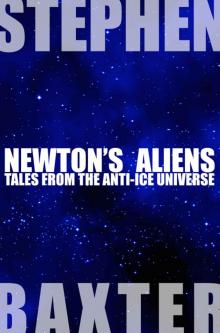 Newton's Aliens: Tales From the Anti-Ice Universe
Newton's Aliens: Tales From the Anti-Ice Universe Exultant
Exultant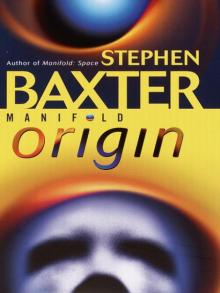 Manifold: Origin
Manifold: Origin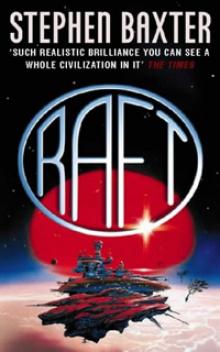 Raft xs-1
Raft xs-1 Bronze Summer n-2
Bronze Summer n-2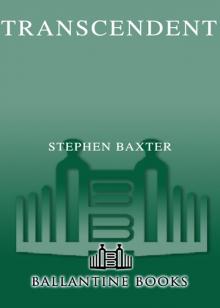 Transcendent
Transcendent Stone Spring
Stone Spring Coalescent
Coalescent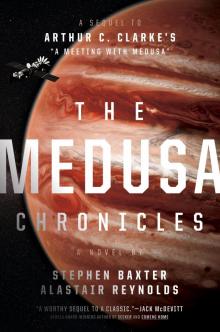 The Medusa Chronicles
The Medusa Chronicles Origin m-3
Origin m-3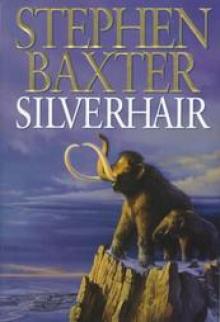 Silverhair tm-1
Silverhair tm-1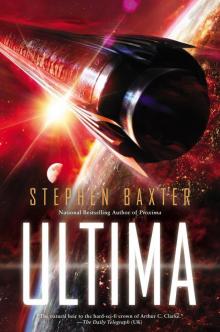 Ultima
Ultima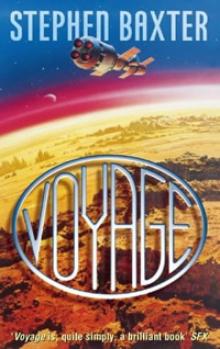 Voyage n-1
Voyage n-1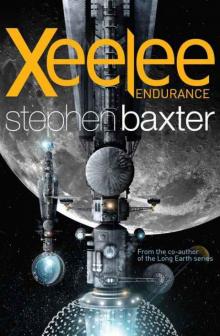 Xeelee: Endurance
Xeelee: Endurance Space m-2
Space m-2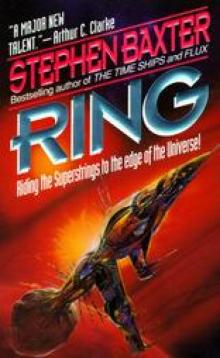 Ring xs-4
Ring xs-4 Raft
Raft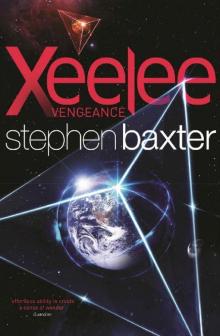 Xeelee: Vengeance
Xeelee: Vengeance Iron Winter n-3
Iron Winter n-3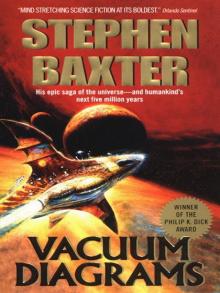 Vacuum Diagrams
Vacuum Diagrams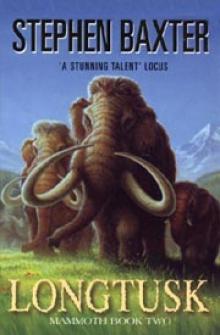 Longtusk tm-2
Longtusk tm-2 Proxima
Proxima Evolution
Evolution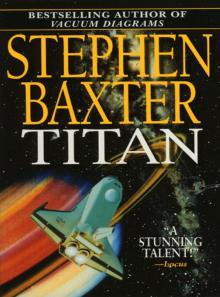 Titan
Titan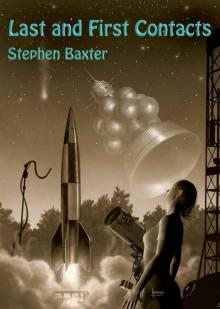 Last and First Contacts (Imaginings)
Last and First Contacts (Imaginings) Emperor
Emperor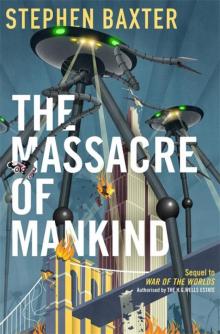 The Massacre of Mankind
The Massacre of Mankind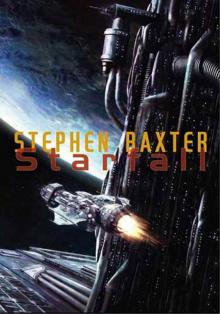 Starfall
Starfall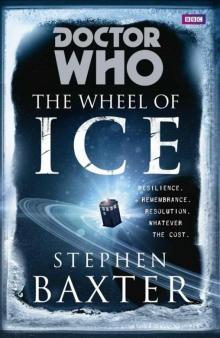 Doctor Who - The Wheel of Ice
Doctor Who - The Wheel of Ice Longtusk
Longtusk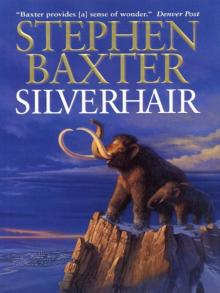 Silverhair
Silverhair Conqueror tt-2
Conqueror tt-2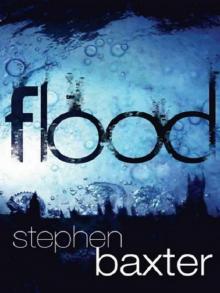 Flood
Flood Flood f-1
Flood f-1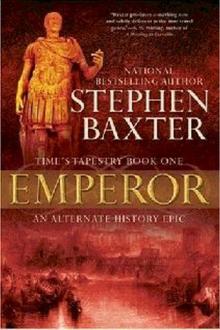 Emperor tt-1
Emperor tt-1 Moonseed
Moonseed Conqueror
Conqueror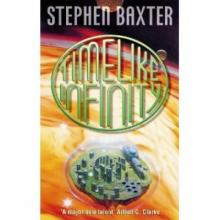 Timelike Infinity xs-2
Timelike Infinity xs-2 The Ghost Pit
The Ghost Pit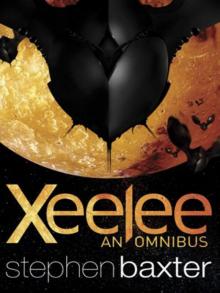 Xeelee: An Omnibus: Raft, Timelike Infinity, Flux, Ring
Xeelee: An Omnibus: Raft, Timelike Infinity, Flux, Ring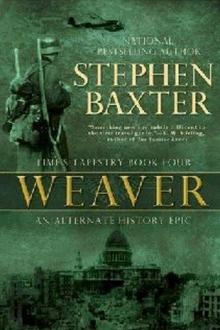 Weaver tt-4
Weaver tt-4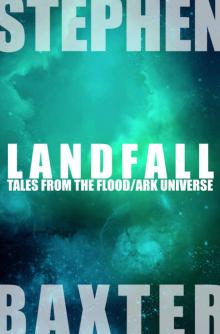 Landfall: Tales From the Flood/Ark Universe
Landfall: Tales From the Flood/Ark Universe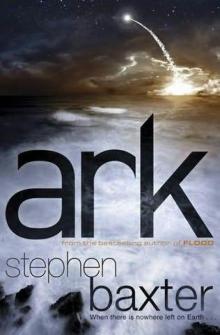 Ark
Ark Emperor: Time’s Tapestry Book One
Emperor: Time’s Tapestry Book One Space
Space Icebones
Icebones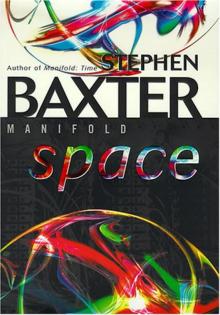 Manifold: Space
Manifold: Space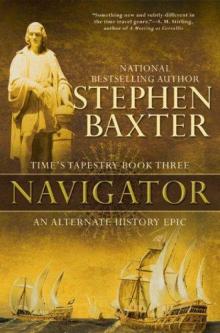 Navigator
Navigator Obelisk
Obelisk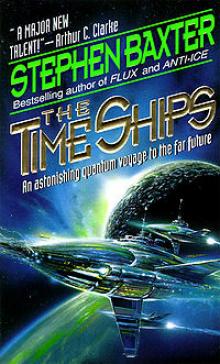 The Time Ships
The Time Ships Bronze Summer
Bronze Summer Resplendent
Resplendent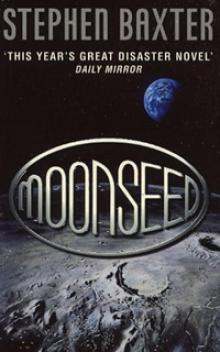 Moonseed n-3
Moonseed n-3 Flux xs-3
Flux xs-3 Transcendent dc-3
Transcendent dc-3 Icebones tm-3
Icebones tm-3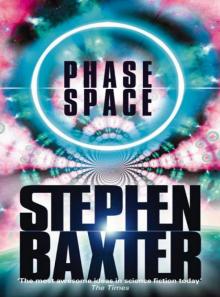 Phase Space
Phase Space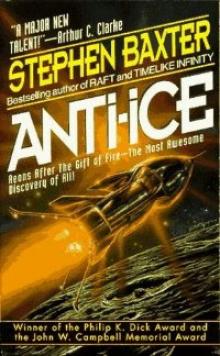 Anti-Ice
Anti-Ice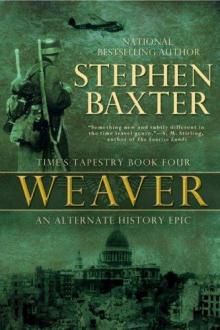 Weaver
Weaver Voyage
Voyage Time m-1
Time m-1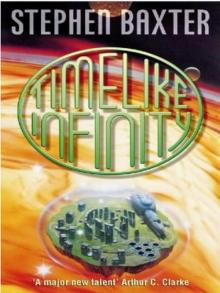 Timelike Infinity
Timelike Infinity Exultant dc-2
Exultant dc-2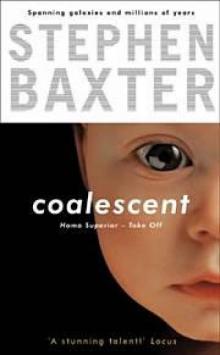 Coalescent dc-1
Coalescent dc-1 Navigator tt-3
Navigator tt-3